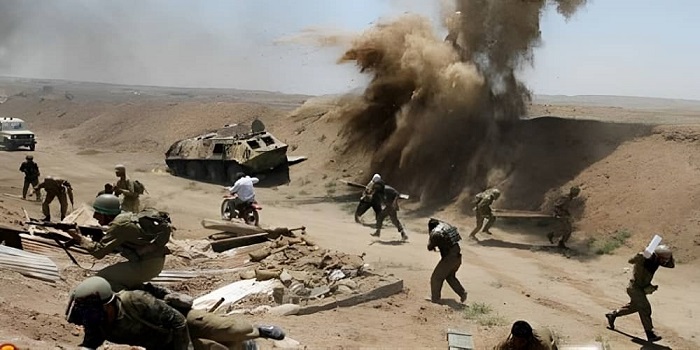
In the labyrinthine corridors of Iran’s history, scholars and policymakers have leaned heavily on “Iranian experts,” many hailing from the West, to unravel the country’s complex geopolitical threads.
Yet, the spate of misinterpretations and misjudgements these experts have made, especially during times of crisis, raises questions about their understanding of Iran’s intricate dynamics. Central to this narrative is the role and influence of the People’s Mojahedin of Iran (PMOI/MEK), a formidable movement in Iran’s political sphere. Notwithstanding its significant impact in challenging successive autocratic regimes, the MEK’s legacy has been systematically undermined. Many Western analysts have pointed to the organization’s alleged association with Saddam Hussein during the Iran-Iraq war, using it as a foundation to question the MEK’s credibility and influence within Iran.
As the Iranian regime marks “Sacred Defense Week”—a commemoration not of war’s end but its beginning—it’s a poignant moment to reevaluate these historical missteps. September 22 is etched in Iranian consciousness for the onset of the Iran-Iraq War, a conflict that exacted a grim toll on Iran, from its million-plus casualties to its staggering economic and infrastructural devastation.
History indicates that the Supreme Leader Ruhollah Khomeini was hardly a pacifist. From border skirmishes to his provocation for the overthrow of the Baath party in Iraq, Khomeini showcased his aggressive intent. However, when Iraqi forces invaded on September 22, 1980, Khomeini swiftly rebranded it as a godsend, rallying the nation behind a defensive call to arms.
This 1999 letter by Hoshyar Zebari, Kurdistan Democratic Party of Iraq's foreign policy spox, later Iraqi FM, is a definitive affirmation that #Iran regime's allegation of MEK involvement in the suppression of Iraqi Kurds 32 years ago was patently false. #No2ShahNo2Mullahs pic.twitter.com/SmqMJ8Vvkf
— Ali Safavi (@amsafavi) March 7, 2023
The MEK, true to their commitment to the nation, took up arms against the invaders. Yet, their greatest challenge was not from the outside but from within. The newly formed Islamic Revolutionary Guard Corps viewed the MEK with suspicion and hostility, often attacking them from the rear, branding them as spies, or arresting them. After enduring such betrayals, the MEK was left with no option but to recede from active war duties.
The Khomeini regime’s obstinacy prolonged the war, even after Iraqi forces retreated in May 1982. The clerical leadership’s aspirations were vividly summed up in their motto, “Conquering Jerusalem via Karbala.”
At the end of the election charade (in June), based on the reports from more than 1,200 of its journalists and reporters in 400 cities of #Iran and more than 3,500 video clips, the PMOI/MEK announced that the turnout was less than 10%. #FreeIran2021https://t.co/PMhg1vHFdX
— Maryam Rajavi (@Maryam_Rajavi) July 12, 2021
In stark opposition, the MEK and the National Council of Resistance of Iran (NCRI) pursued peace. Their international campaign, amassing 5,000 signatures from global leaders, underscored the overwhelming demand for peace.
By 1986, circumstances led the MEK to Iraq, but not without ensuring their autonomy. There, the National Liberation Army (NLA) of Iran was formed, which carried out numerous successful operations against the Iranian regime.
It was only when the NLA threatened the regime’s very heart in Tehran did Khomeini, previously dismissive of peace overtures, suddenly capitulate and agree to a ceasefire in 1988.
NCRI's 42nd Anniversary: As the democratic alternative to the clerical regime, the NCRI has adopted plans for the transitional period:
.https://t.co/ELKh2ESba0.
🔶 Peace Plan for the Iran-Iraq War – March 13, 1983
🔶 Plan for Autonomy of Iranian Kurdistan – November 8, 1983
🔶…— NCRI-U.S. Rep Office (@NCRIUS) July 24, 2023
Regrettably, the regime’s mastery over narrative-building and misinformation continues unabated, often facilitated by the so-called “Iran experts.” The MEK’s true legacy deserves rigorous examination, devoid of bias or misinterpretation.

MEK Iran (follow us on Twitter and Facebook), Maryam Rajavi’s on her site, Twitter & Facebook, NCRI (Twitter & Facebook), and People’s Mojahedin Organization of Iran – MEK IRAN – YouTu
